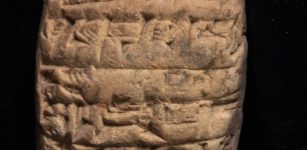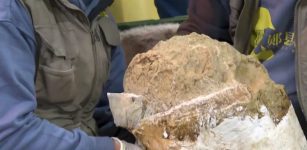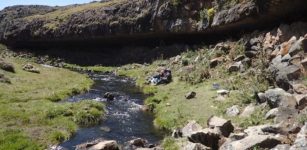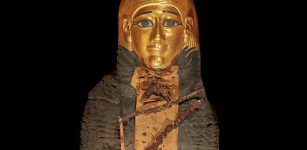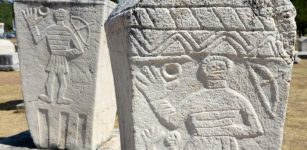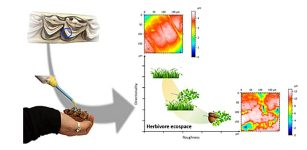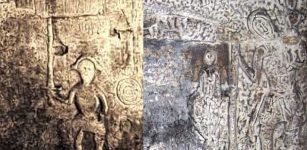Neanderthals And Homo Sapiens Invented Different Fire Techniques – Evolution Of Human Cognition
Jan Bartek - AncientPages.com - The Neanderthals and Homo sapiens were both innovative and often devised similar surviving techniques independently. Recently, scientists demonstrated Neanderthals invented or developed birch tar making technique independently from Homo sapiens.
In a new study, researchers explored cognitive aspects of early fire-making and the possible inventors of fire-making kits. It is well-known the Neanderthals understood the benefits of fire-making, but what do we known about the cognitive aspects involved in this ancient process?
Credit: Adobe Stock - Gorodenkoff
"Most researchers have focused on the cognition of fire use, but few have explored the cognition of firemaking. With this contribution we analyse aspects of the two main hunter-gatherer firemaking techniques—the strike-a-light and the manual fire-drill—in terms of causal, social and prospective reasoning.
Based on geographic distribution, archaeological and ethnographic information, as well as our cognitive interpretation of strike-a-light firemaking, we suggest that this technique may well have been invented by Neanderthal populations in Eurasia. Fire-drills, on the other hand, represent a rudimentary form of a symbiotic technology, which requires more elaborate prospective and causal reasoning skills.
This firemaking technology may have been invented by different Homo sapiens groups roaming the African savanna before populating the rest of the globe, where fire-drills remain the most-used hunter-gatherer firemaking technique," the researchers write in the study Minds on Fire: Cognitive Aspects of Early Firemaking and the Possible Inventors of Firemaking Kits published in Cambridge Archaeological Journal.
The focus on Stone Age archaeology, along with the investigation of cognitive implications of early fire-making techniques led scientists to propose ancient humans invented different fire techniques separately.
The two basic techniques of hunter-gatherer fire-making: Strike-a-light and fire drill
Hunter-gatherers produced fire by striking of two stones to create a spark, often involving a nodule of flint or other appropriate rock struck on iron pyrite. According to scientists, recent and current hunter-gatherers use the manual fire-drill technique. " In southern Africa, this method is still in use by the San and their descendants (own observation), and in earlier times it seems to have varied little among the different hunter-gatherer, herder and farmer groups of the region," the study informs.
The science team suggests Neanderthal populations in Eurasia invented the strike-a-light fore technique. The fire-drill kit technique can be traced to Africa and could, according to the researchers, only have been invented by modern humans. "The distribution maps for strike-a-light versus fire-drill firemaking techniques support a hypothesis wherein the strike-a-light method may have been more successful in high-latitude regions, and fire-drills best suited for drier, warmer areas," scientists say.
Some cognitive aspects of firemaking
"Because it is tool-set dependent, our hypothesis is that firemaking requires more complex cognitive processes compared to the ability to use natural fire or to control and maintain it. It is a prime example of prospective cognition, since it involves planning in several stages for the future goal of a fire. First, it requires a tool set for ignition. Secondly, burning materials of the right types must be collected. Finally, the fire is ignited, built and maintained with foresight on how it will be used or contained. Each of these phases involves different forms of causal thinking," the scientists explain.
"We have hypothesized about some aspects of the cognition of early firemaking based on ethnographic and archaeological observations. We have also demonstrated that the distribution maps for strike-a-light versus fire-drill firemaking techniques support a hypothesis wherein the strike-a-light method may have been more successful in high-latitude regions, and fire-drills best suited for drier, warmer areas. The distribution could further link to the seeming rarity of pyrite outcrops in Africa, which remains to be investigated
We focused on only two firemaking techniques, but exploring others, such as fire-ploughs and different configurations of thong-driven techniques, could add nuance to our interpretation. We limited our cognitive testing of firemaking to our models of causal and social (teaching) cognition, integrating it with aspects of prospective cognition and rehearsal.
A material-and-action sequence for strike-a-light firemaking representing planning depth and prospective cognition. Credit: Cambridge Archaeological Journal (2023). DOI: 10.1017/S0959774322000439
Our main take-away is two-fold. First, from a cognitive perspective, it is likely that Neanderthal groups independently discovered expedient strike-a-light firemaking. Because of probable shared levels of intentional teaching in Homo sapiens and Neanderthals such as demonstrating and communicating concepts, we may speculate about teaching and learning as well as cultural exchange between the populations when they encountered each other—perhaps also exchanging skills and knowledge about firemaking technologies and where to locate the necessary materials.
Secondly, the fire-drill technique that requires extended causal, social and prospective understanding, compared to the strike-a-light technique, may have been invented by Homo sapiens in Africa where populations show early signs of such cognition before spreading across the globe," the scientists conclude in their paper.
The study was published in Cambridge Archaeological Journal
Written by Jan Bartek - AncientPages.com Staff Writer




